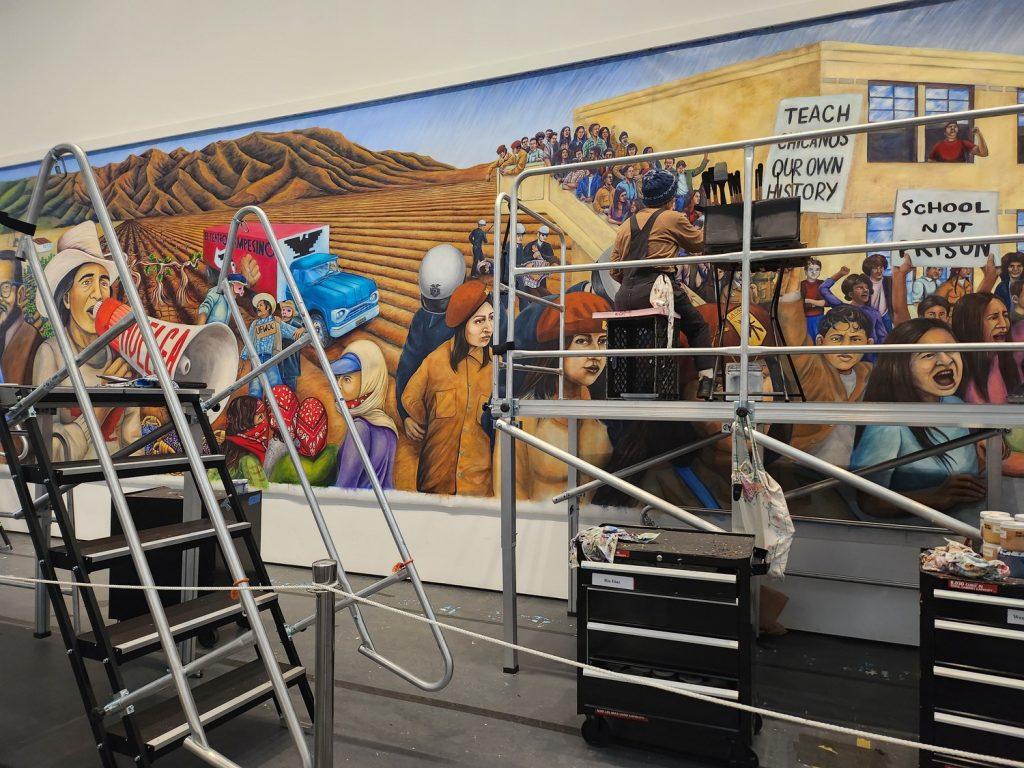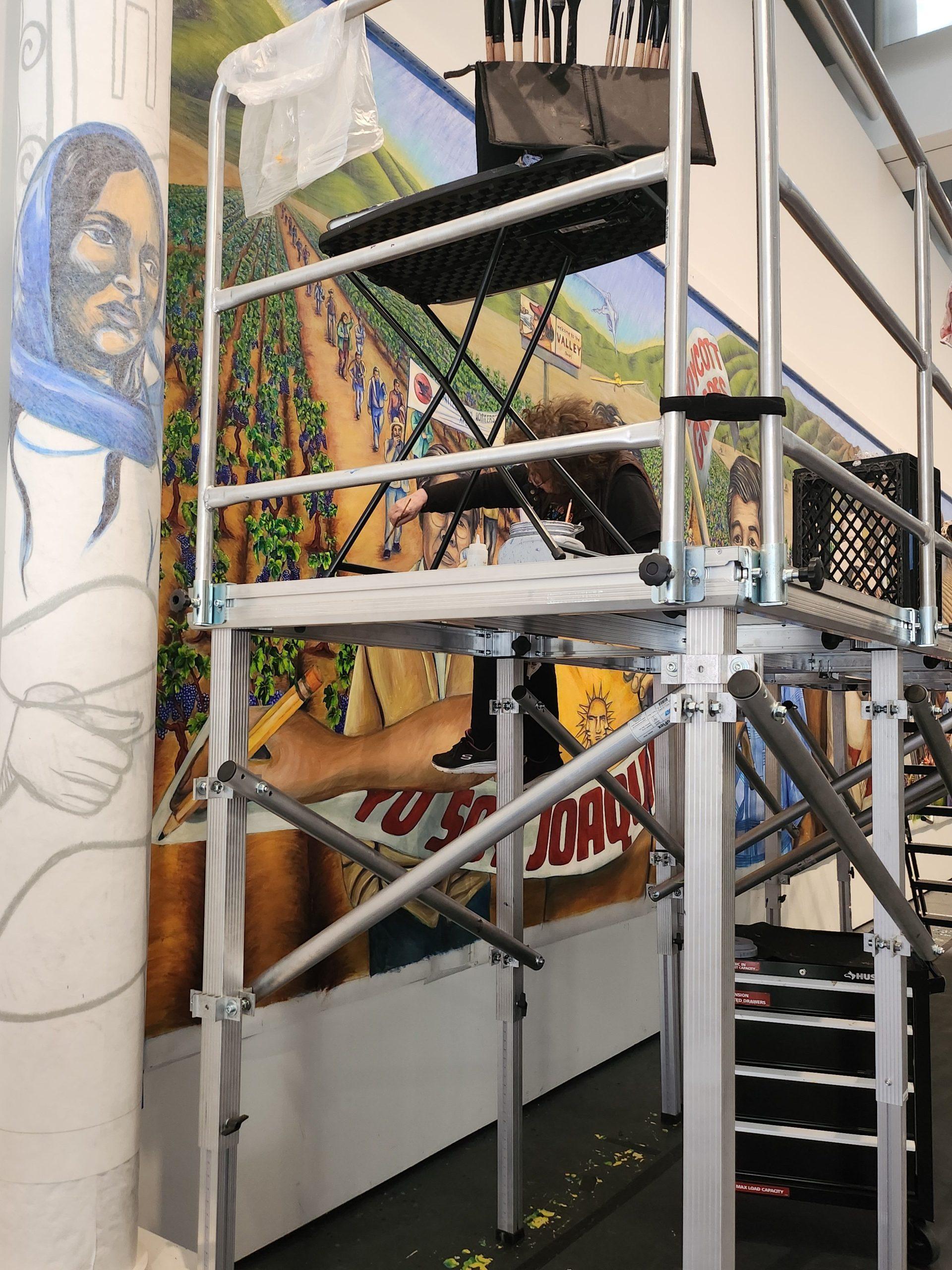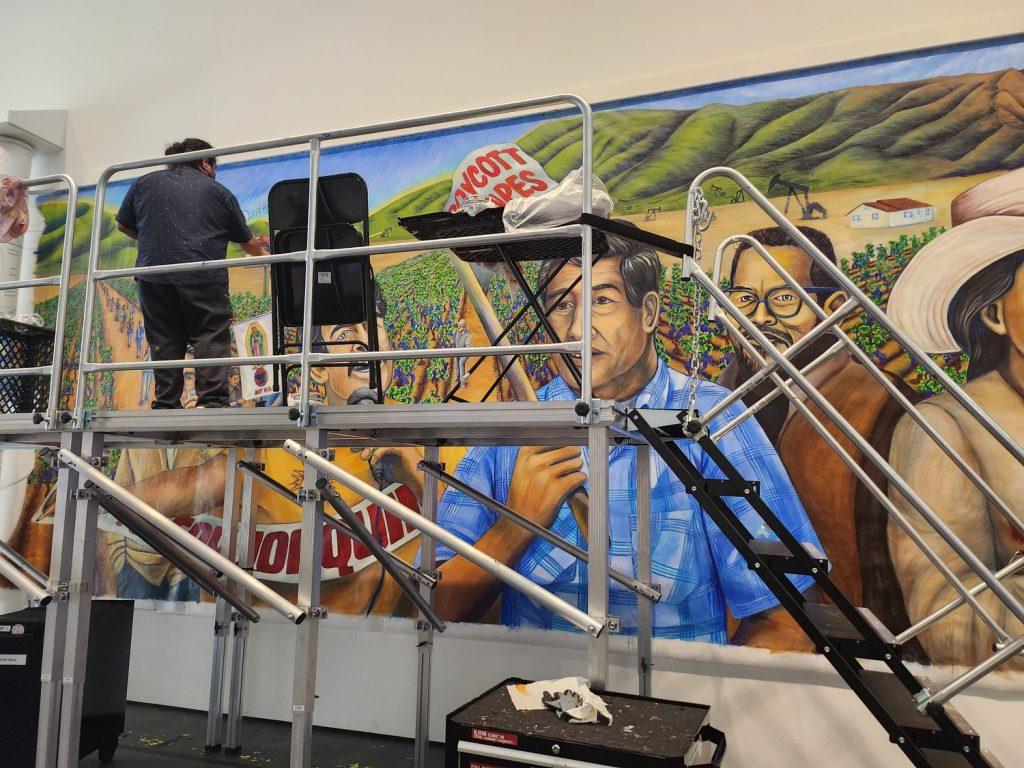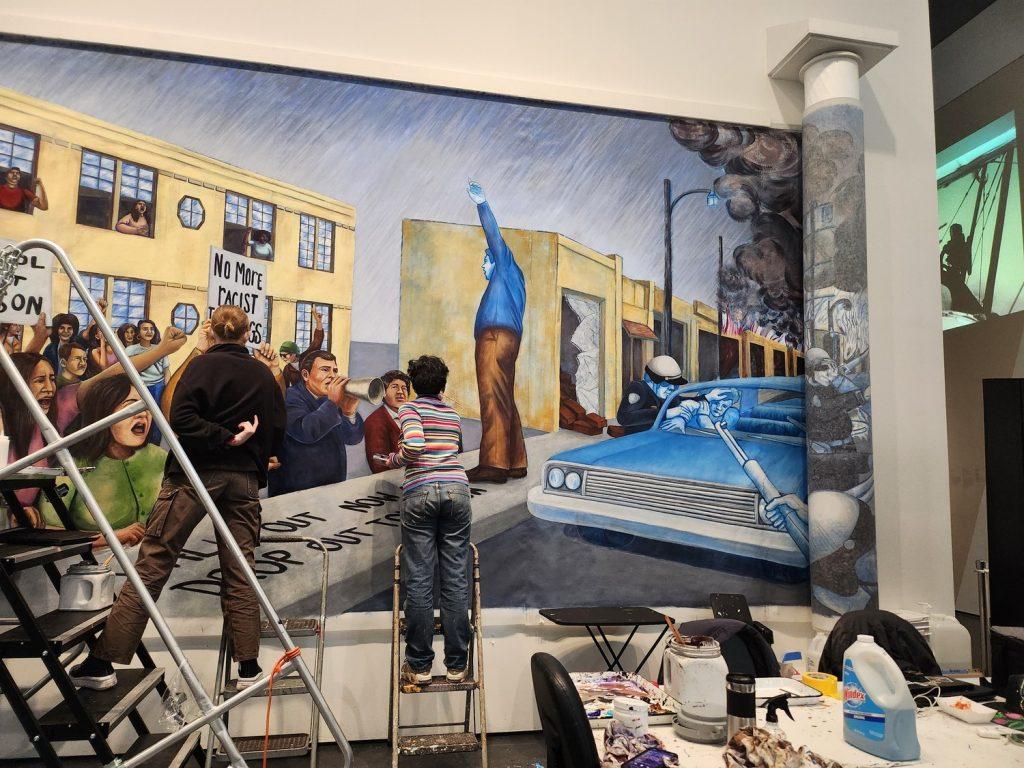
“The story I wanted to tell was the story of the history that wasn’t recorded in the history books — the history of people of color, the history of women, of indigenous people — to look at what was missing from the story of America and to reconstruct that and teach it to the young people, who’d begin to learn about each other,” said Judith F. Baca, Chicana muralist and activist, in an interview with PBS about “The Great Wall of Los Angeles.”
“The Great Wall of Los Angeles” is a mural on the National Register of Historic Places that spans over half a mile along the west wall of the Tujunga Wash Flood Control Channel of the LA River and depicts the history of California through panels capturing the role of diverse and traditionally marginalized communities and their leaders in moments and movements, according to the National Park Service.
Some of the scenes represented include “Indian Assimilation,” “Asians Gain Citizenship and Property,” “Bracero Program,” “Big Mama Thorton” and “Gay Rights.”
Just 24 miles from Pepperdine, the Los Angeles County Museum of Art (LACMA) hosts a live demonstration exhibit of the mural painting process open until June 2, according to their website. The team of artists will finish painting two sections depicting the Watts Rebellion and Chicano Movement while in residence, which they will add to the east side of the wall to continue the project’s vision.
Baca, partnering with the Social and Public Art Resource Center (SPARC), directed a collaborative team of artist supervisors and volunteer youth to complete the existing section, spanning events from prehistoric times to the 1960 Olympics, according to SPARC. The team completed the portion over five summers, beginning in 1974.

SPARC received a grant from The Andrew W. Mellon Foundation on Feb. 9, 2021, to expand and preserve “The Great Wall of Los Angeles,” according to SPARC. In addition, the project aims to build an interpretive bridge to span across the river, connecting all periods of California and L.A. history.
“It’s, you know, pretty unprecedented here in LACMA, you know, museum context versus what we normally would do doing this painting out on the street and the actual wash,” said Ricardo Mendoza, artist and project manager for “The Great Wall of Los Angeles” under SPARC.
Mendoza joined Baca’s group of volunteers in painting the original wall when he was 18, he said. Today, he resonates with the plight showcased in the scenes he paints and hopes to see the completion of the project come full circle.
“It’s my culture, my heritage,” said Mendoza, who identifies as Chicano and Native American.

This expansion will continue the story from the 1960s into the present, Mendoza said. The team hopes to complete the project in time for the L.A. 2028 Summer Olympics.
“Judy’s methodologies of social engagement have been formed in the early stage for much for this project but then for citywide mural projects as well,” Mendoza said. “They’ve become a model nationally and possibly worldwide that have — into today — that other communities use for social engagement.”
Artist Rio Diaz said a crucial part of the project lies in the efforts of the research team behind the scenes, who sift through archives to build an artistic vision.
“You know, this is what everyone gets to see,” Diaz said. “This doesn’t happen without this critical step.”
Isa Lovelace, artist and member of the research team, said the research team focuses on images, searching for important topics from each decade and presenting their findings to recommend what the artists should highlight.
“The artists, you know, have experienced and lived experiences of these decades,” Lovelace said. “So, they also recommend certain topics, and then we research based on their suggestions as well.”

The research team is responsible for thinking of visual metaphors — not just the historical facts and details, Lovelace said. One example she points to is the section “Generation on Fire,” which celebrates the Freedom Riders.
“‘Generation on Fire’ really illustrates this well because it shows the events of like the sanitation workers’ protest, as well as kind of this visual metaphor of a generation on fire or just like a generation advocating for this change,” Lovelace said.
LACMA tickets to explore this exhibit and many more are free for L.A. County residents on weekdays after 3 p.m., with a valid ID or $19 at other times, according to their website.
“You can really get up close and see details that you wouldn’t get to see otherwise once it gets installed too,” Lovelace said. “It’s pretty special to be here, and I feel like it’s absolutely exposing this to people who haven’t visited the wall either.”
___________________
Follow the Graphic on X: @PeppGraphic
Contact Madison Luc via email: madison.luc@pepperdine.edu
